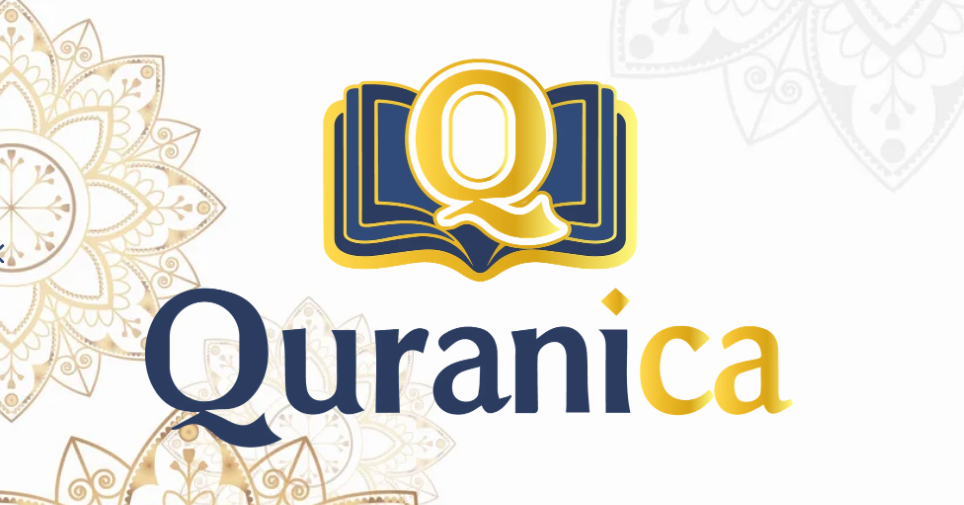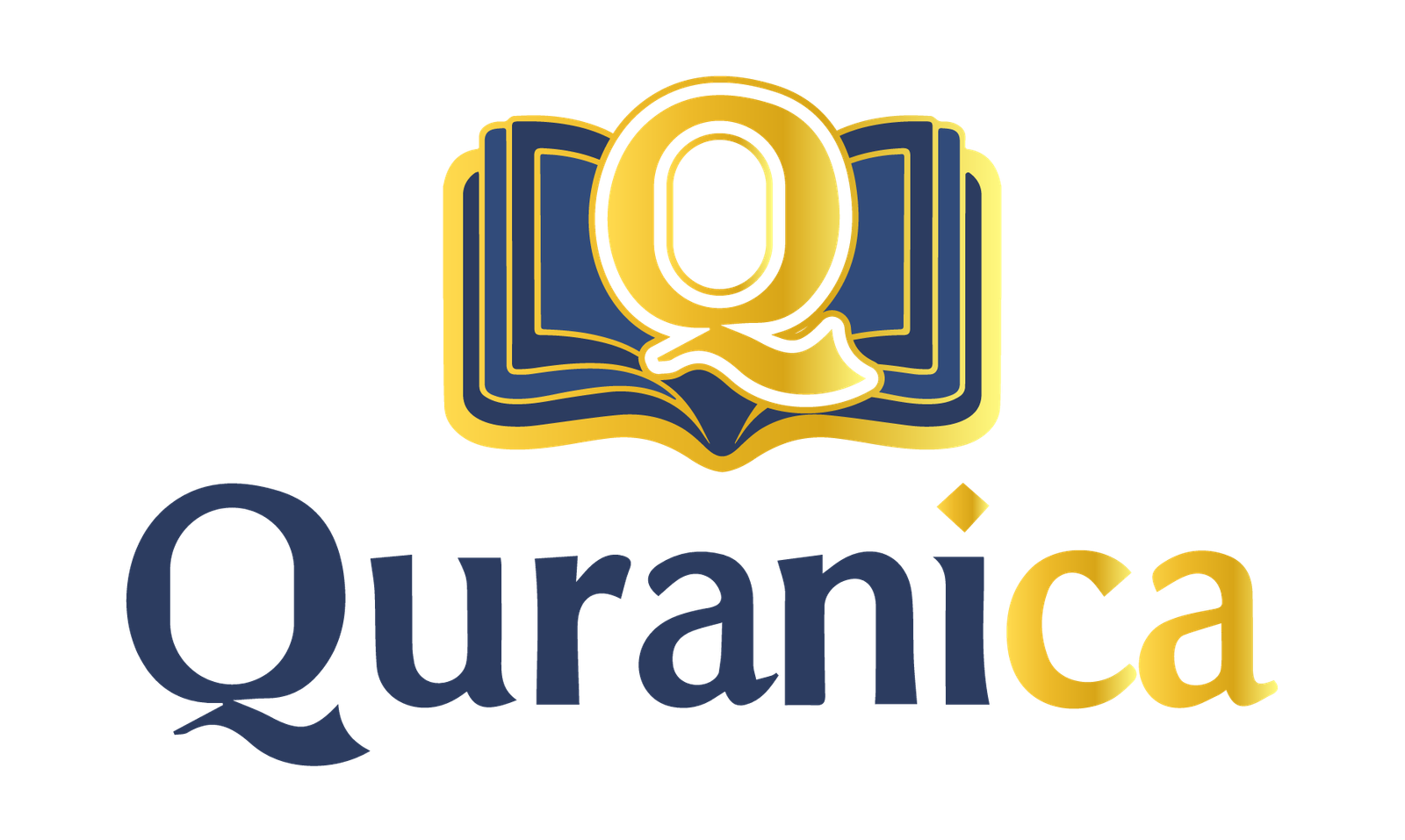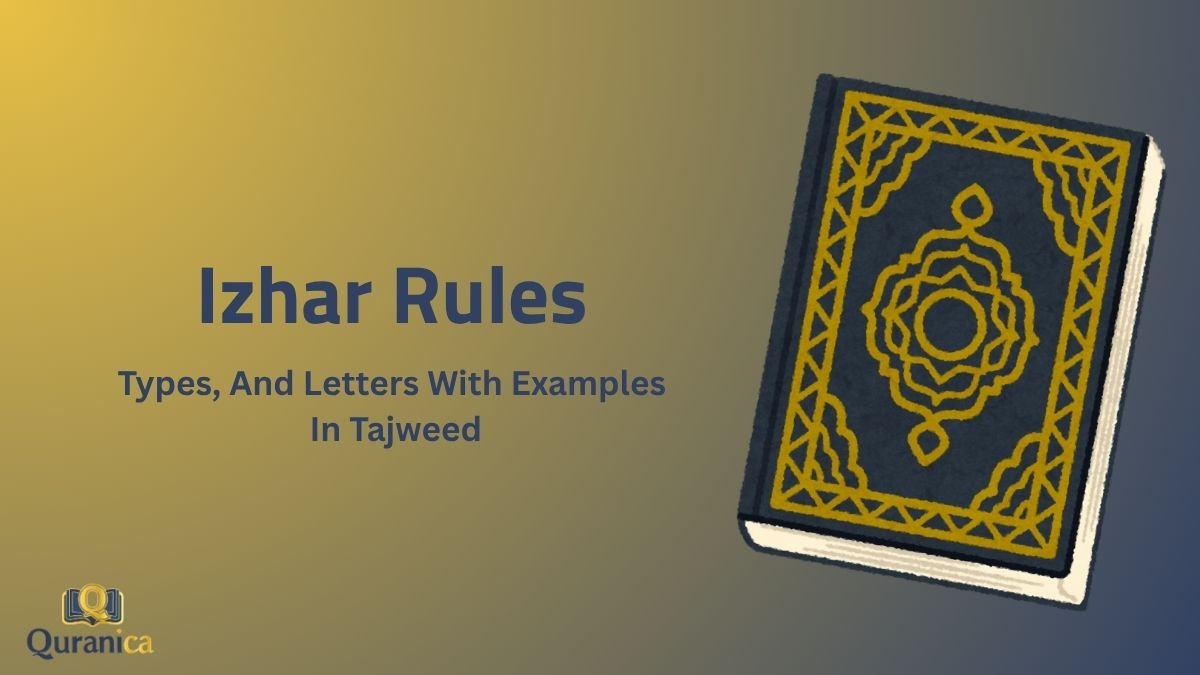In a nutshell: Izhar, a key Tajweed principle, ensures clear pronunciation of Arabic letters in Quranic recitation without merging or nasalization. It has three forms: Izhar Halqi (throat clarity with six specific letters), Izhar Shafawe (lip clarity with Meem Sakinah), and Izhar Mutlaq (exceptional clarity in four unique Quranic words). Each type has defined triggers and pronunciation techniques that learners must master. Avoiding pauses, nasal sounds, and vowel distortion is crucial.
When you listen to a beautiful recitation of the Quran, you hear every single letter shining with its own unique sound.
This wonderful clarity is at the heart of Tajweed, and one of its most important rules is called Izhar.
Izhar literally means “to make clear” or “to make apparent.” It’s about giving each letter its right, letting it be heard distinctly without hiding or changing its sound. Think of it as the foundation of clear and correct Quranic recitation.
The Linguistic Definition of Izhar in Arabic
The word Izhar (إِظْهَار) comes from the Arabic root word “ظهر” (Zha-ha-ra). This verb means “to make clear,” “to make apparent,” or “to clarify.”
It’s the idea of bringing something out into the open so it can be seen or understood without ambiguity.
This linguistic meaning translates perfectly into its technical application in Tajweed, where the sound of a specific letter is made completely clear and apparent to the listener.
What is Izhar in Tajweed?
In the science of Tajweed, Izhar is the rule of pronouncing a letter clearly and distinctly from its point of articulation (makhraj). You don’t merge it, you don’t hide it, and you don’t add any extra nasal sound (ghunnah) to it.
Essentially, you are letting the letter be itself, pronounced fully and clearly, before moving smoothly to the next letter. It is the default and most frequent rule you will encounter in your recitation journey.
Think of it as the default setting for pronunciation. Before you learn to merge or hide, you must first learn to clarify.
This is why mastering Izhar is a crucial first step for any student of the Quran. It builds the discipline of precise articulation and attentiveness to each letter.
Izhar Letters:
In the science of Tajweed, the Izhar letters are six specific Arabic letters that require clear pronunciation of Noon Sakinah (نْ) or Tanween (ــً، ــٍ، ــٌ) when they follow. These letters are:
- Hamzah (ء)
- Haa (هـ)
- ‘Ayn (ع)
- Haa (ح)
- Ghayn (غ)
- Khaa (خ)
These are known as the Izhar letters because they are pronounced from the throat (Al-Halq). That’s why this type of Izhar is often called Izhar Halqi, meaning “throat clarity.”
When any of these six letters comes after a Noon Sakinah or Tanween, the Noon sound must be pronounced clearly and without nasalization (ghunnah).
Each of these letters originates from a different part of the throat, making it difficult to blend them with the nasal Noon sound — hence, the rule emphasizes full articulation and clarity.
For students just beginning their journey, mastering these foundational rules is essential. Our Learn Tajweed for Beginners Course at Quranica is designed to guide you step-by-step.

Types of Izhar in Tajweed
The beautiful science of Tajweed categorizes Izhar into three main types based on which letters are involved. The three main Izhar types are:
- Izhar Halqi (Clarity from the Throat),
- Izhar Shafawe (Clarity of the Lips),
- Izhar Mutlaq (Absolute Clarity).
We will walk through each one, step by step.
Izhar means “clarity” — and in Tajweed, it refers to clearly pronouncing the Noon Sakinah (نْ) or Tanween (ــً، ــٍ، ــٌ) without nasalization. There are three types:
1. Izhar Halqi – Throat Clarity
Occurs when Noon Sakinah or Tanween is followed by any of six throat letters: (ء، هـ، ع، ح، غ، خ).
Example with ع (Ayn):
“مِنْ عِلْمٍ” → min ‘ilmin
The نْ in min is clearly pronounced before the deep sound of ع in ‘ilmin.
Example with خ (Khaa):
“مَنْ خَافَ” → man khaafa
The Noon Sakinah is pronounced clearly before خ.
2. Izhar Shafawe – Lip Clarity
This applies only to Meem Sakinah (مْ) when followed by any letter except Meem (م) or Baa (ب).
Example with د (Daal):
“لَكُمْ دِينُكُمْ” → lakum deenukum
The مْ is pronounced clearly before د.
3. Izhar Mutlaq – Absolute Clarity (Exception Case)
A rare rule: When Noon Sakinah is followed by Yaa (ي) or Waw (و) within the same word, we pronounce the Noon clearly (no merging), unlike the usual Idgham rule.
Example:
“بُنْيَانٌ” → bunyanun
Here, the نْ is pronounced clearly before the ي in the same word.
How to Pronounce Izhar Correctly
Perfecting Izhar is about practice and feeling the sound. The core principle is to give the letter its right without adding anything or taking anything away.
When you apply Izhar to a Noon Sakinah or Tanween, you pronounce the ‘n’ sound crisply.
Your tongue should touch its articulation point (the upper gum line behind the front teeth) for a brief moment and then release for the next letter.
There should be no lingering nasalization (ghunnah) or any pause. The sound is immediate and clear.
For Izhar Shafawe (Meem Sakinah), you bring your lips together firmly to produce the ‘m’ sound, and then you move directly to the articulation of the next letter.
The sound is clean, without any humming or pausing with the lips closed. The best way to perfect your pronunciation is through guided practice. Try Quranica’s Tajweed Test and Practice sessions to get feedback from certified tutors.
Common Mistakes When Applying Izhar
As you practice, be mindful of a few common mistakes that students often make.
1. Making a short pause (Sakt) on the Noon or Meem
Some students tend to pause for a split second on the Noon Sakinah or Meem Sakinah before pronouncing the next letter.
This is incorrect as it disrupts the natural flow of recitation. Izhar should be crisp and immediate, not hesitant.
2. Adding Ghunnah (nasalization)
The defining characteristic of Izhar is the absence of extra nasalization (ghunnah). While the Noon and Meem letters naturally have a nasal quality, in Izhar, this is not prolonged or emphasized.
A common error is to add a slight hum or buzz, which is more characteristic of Ikhfa or Idgham.
3. Changing the vowel sound before or after
In an effort to make the Noon or Meem clear, a student might accidentally stretch or alter the vowel sound of the letter before it.
It’s crucial to maintain the correct vowel sounds and timing of all surrounding letters to ensure overall fluency.
Master True Clarity in Your Recitation with Quranica
Izhar is more than just a rule; it is a discipline of clarity, precision, and respect for the divine words of the Quran.
By perfecting Izhar, you honor every single letter, reciting the Book of Allah as it was revealed and taught. It is the foundation upon which the beautiful art of Tajweed is built.
Your journey to flawless recitation is a noble one, and you don’t have to walk it alone. At Quranica, we are dedicated to helping you connect with the Quran on a deeper level.
- Expert Tutors: Our instructors are not just teachers; they are mentors. As native Arabic speakers and honored graduates of the prestigious Al-Azhar University, they bring authenticity and passion to every lesson.
- Certified & Experienced: Holding Ijazah (a license to teach from an unbroken chain of scholars back to the Prophet), our tutors have years of dedicated experience in teaching the Quran and Arabic to non-Arabs just like you.
- Flexible Learning: We understand your life is busy. That’s why we offer a wide range of courses tailored to your schedule and skill level, from the very basics to advanced scholarship.
- Competitive Prices: We believe that high-quality Islamic education should be within everyone’s reach. Our programs are designed to be accessible and affordable.
We invite you to explore our world of authentic Quranic education:
- Learn Quran with Tajweed (for all levels)
- Quran Memorization (Hifz) Programs
- Ijazah Course
- Islamic Studies
- Ten Qirat
- Arabic Lessons for Beginners
Explore our full range of courses.
Enroll in a Quranica course today and begin your journey toward flawless recitation!

Conclusion
Izhar is a foundational Tajweed rule that ensures each Quranic letter is pronounced clearly and accurately. The term “Izhar” means “to make clear,” and it guides students to recite without merging, hiding, or adding unnecessary nasal sounds to the letters.
Izhar is categorized into three types: Izhar Halqi (clarity using throat letters), Izhar Shafawe (clarity of the lips involving Meem Sakinah), and Izhar Mutlaq (absolute clarity in rare cases within specific words). Each type has distinct application rules and specific letters that trigger the rule.
Izhar Halqi occurs when a Noon Sakinah or Tanween is followed by any of six throat letters: Hamza, Haa, ‘Ayn, Haa, Ghayn, or Khaa. These throat letters prompt full and clear articulation of the ‘n’ sound with no nasal hum or blending.
Izhar Shafawe applies when Meem Sakinah is followed by any letter except Meem or Baa. The sound must be pronounced crisply from the lips, maintaining clarity and avoiding nasalization or pauses.
Izhar Mutlaq, on the other hand, is a rare exception involving specific words like dunya or bunyan, where the typical merging rule is overridden.
Perfecting Izhar requires avoiding common mistakes like pausing, adding nasal sound (ghunnah), or stretching vowels.








0 Comments